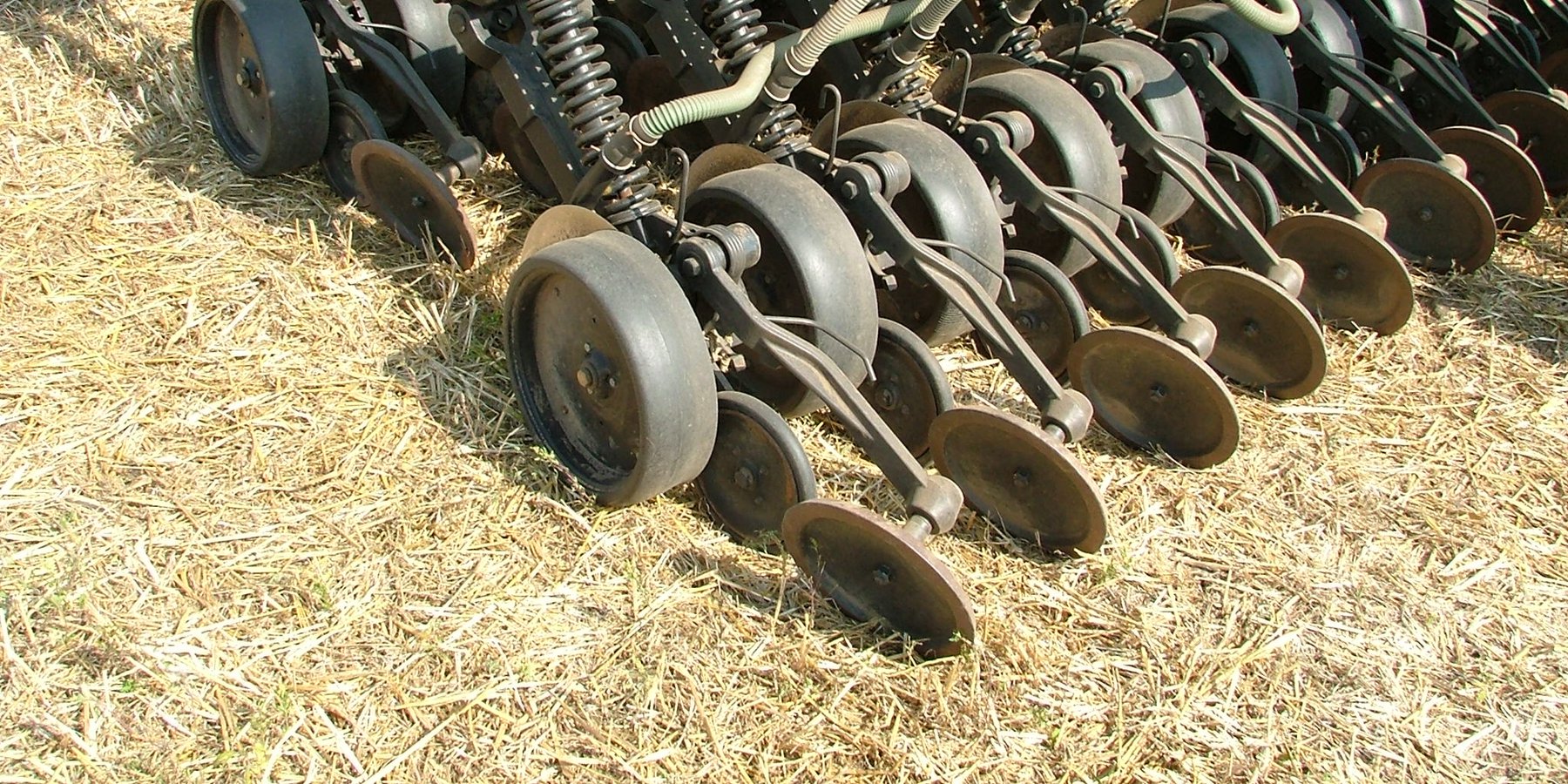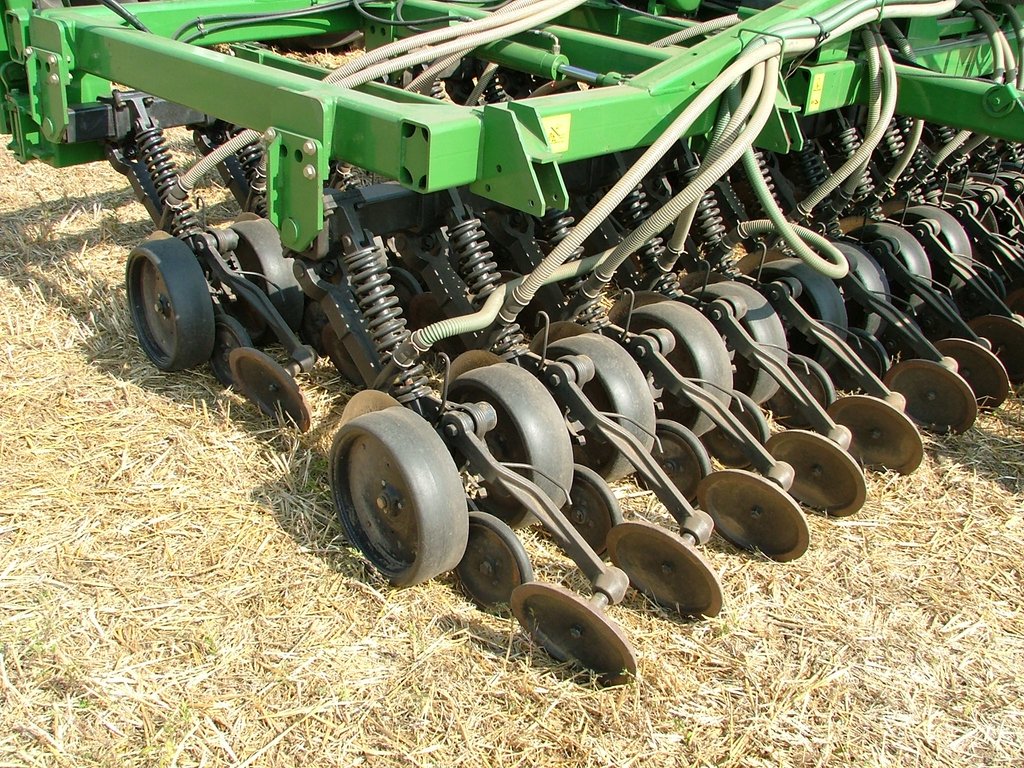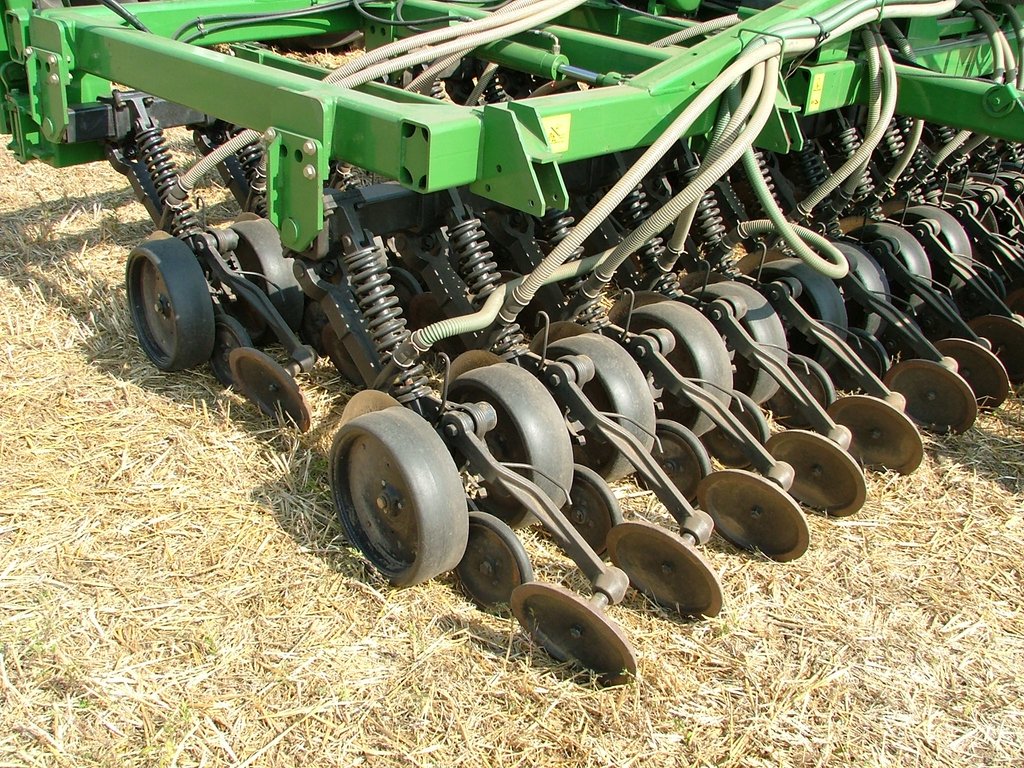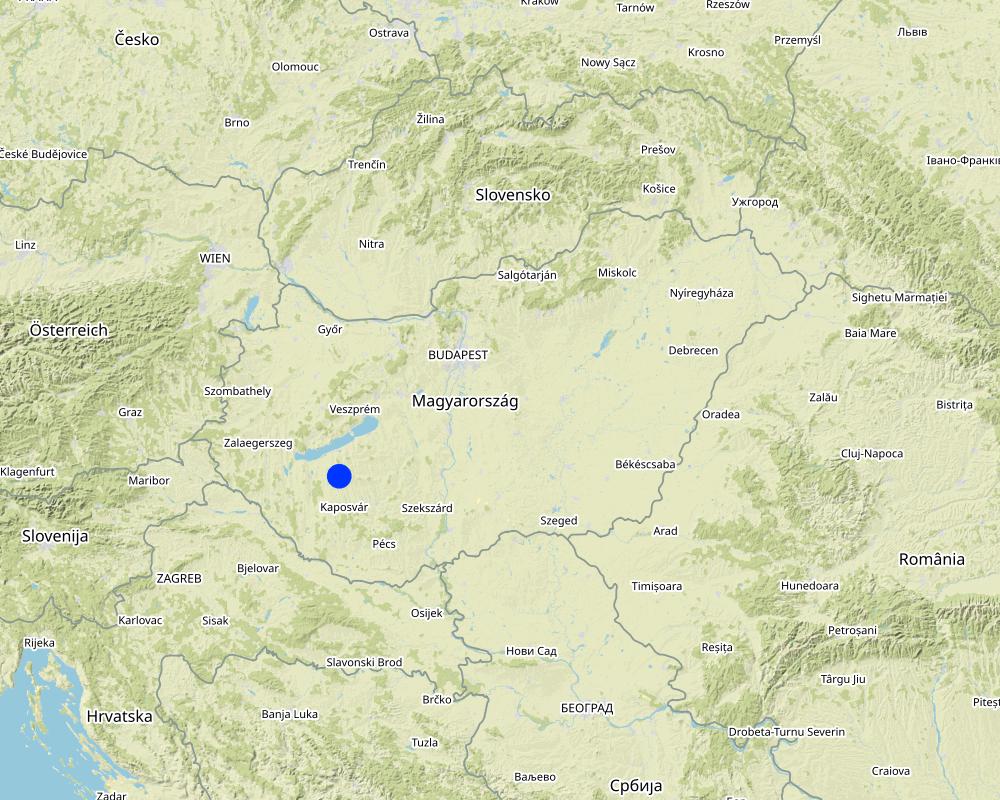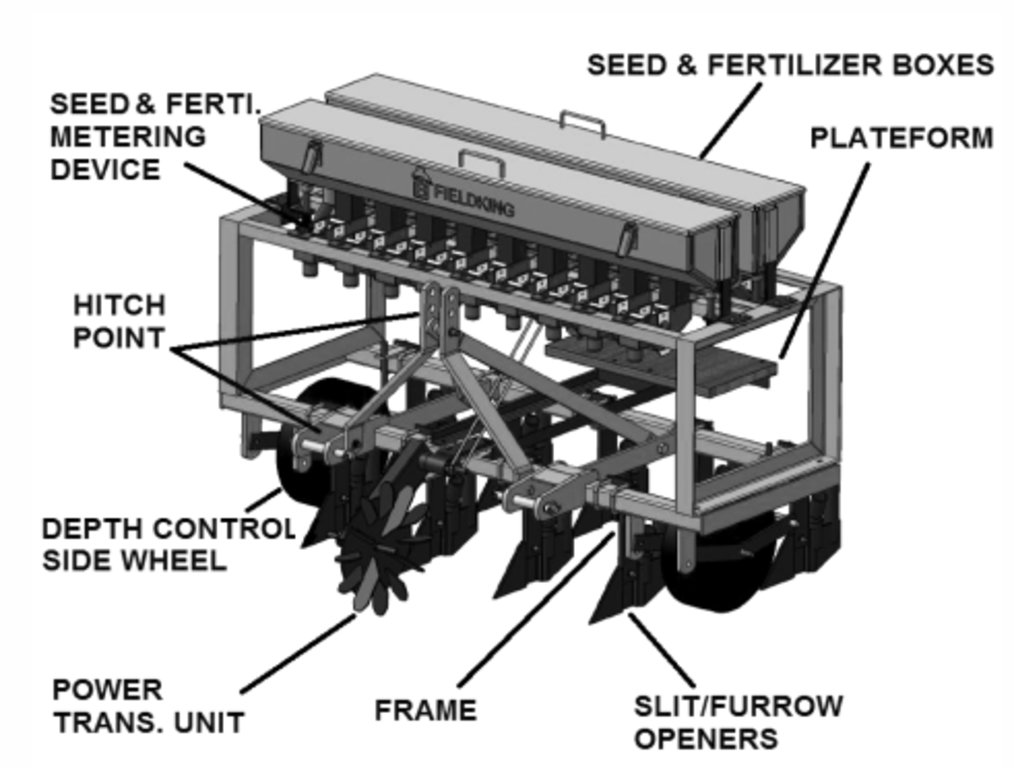No-till agriculture [匈牙利]
- 创建:
- 更新:
- 编制者: Brigitta Szabó
- 编辑者: Piroska Kassai, Zoltan Toth
- 审查者: William Critchley, Rima Mekdaschi Studer
művelés nélküli direktvetés
technologies_6199 - 匈牙利
查看章节
全部展开 全部收起1. 一般信息
1.2 参与该技术评估和文件编制的资源人员和机构的联系方式
关键资源人
土地使用者:
Ferenc Berend
Berend Kft
匈牙利
有助于对技术进行记录/评估的项目名称(如相关)
OPtimal strategies to retAIN and re-use water and nutrients in small agricultural catchments across different soil-climatic regions in Europe (OPTAIN)有助于对技术进行记录/评估的机构名称(如相关)
Institute for Soil Sciences, Centre for Agricultural Research (ATK TAKI) - 匈牙利1.3 关于使用通过WOCAT记录的数据的条件
编制者和关键资源人员接受有关使用通过WOCAT记录数据的条件。:
是
1.4 所述技术的可持续性声明
这里所描述的技术在土地退化方面是否存在问题,导致无法被认为是一种可持续的土地管理技术?:
否
1.5 参考关于SLM方法(使用WOCAT记录的SLM方法)的调查问卷

Zero Tillage [中国]
Zero tillage approach was developed to protect the soils from sealing rainfall, to achieve and maintain a open internal soil structure, to enhance biological processes in the soil, and to develop a means for safe disposal of any surface runoff that nevertheless will occur.
- 编制者: Zhanguo Bai
2. SLM技术的说明
2.1 技术简介
技术定义:
No-till agriculture replaces conventional soil tillage in order to reduce costs and labour - and to provide a mulch layer on the soil surface from the residues of the previous crop: this protects the soil surface and its ecology.
2.2 技术的详细说明
说明:
No-till agriculture is applied on arable land, principly for cereals and oil seed grains. It is not suitable for root and tuber crops. Crops are sown by a direct drilling machine capable of placing seeds into undisturbed soil. The soil surface is covered by the residues of the previous crop. There is no soil distubance by tillage as in conventional ploughing and harrowing.
The purpose is to reduce costs and labour requirements and to provide a mulch layer on the surface that creates better soil protection. Changing to no-till from conventional tillage requires the purchase or hire of a special direct drilling machine, and a higher performance tractor is also usually needed.
As a consequence of the adoption of no-till agriculture due to zero soil disturbance, soil microbes and mesofauna (very small invertebrates) are also undisturbed. Soil aggregates are more stable and the tunnel systems of mesofauna and earthworms result in good water infiltration. In addition – due to the mulch cover on the surface – the speed of runoff water is reduced or eliminated, and fewer pollutants reach watercourses.
Under zero tillage systems, mechanical pest and weed control cannot be used, so more intensive chemical weed and pest control is needed, resulting in a potential environmental hazard. Furthermore, as a result of continuous mulch cover, zero soil disturbance and high biodiversity in the soil, wildlife are attracted to these fields to feed on snails, worms and larvae which can cause damage to the crops.
The establishment of the technology is expensive in the short term (purchase of the machines) and yields will decrease significantly. However, labour and other costs (fuel for example) will drop. These turns running cost into positive in the long term again and establishment/ investment costs will also be positive (comparing to conventional tillage system.)
2.3 技术照片
2.4 技术视频
注释、简短说明:
no video is uploaded
2.5 已应用该技术的、本评估所涵盖的国家/地区/地点
国家:
匈牙利
区域/州/省:
Somogy County
有关地点的进一步说明:
Vityapuszta
具体说明该技术的分布:
- 适用于特定场所/集中在较小区域
技术现场是否位于永久保护区?:
否
Map
×2.6 实施日期
注明实施年份:
2010
2.7 技术介绍
详细说明该技术是如何引入的:
- 通过土地使用者的创新
注释(项目类型等):
The land user (a farmer) implemented the technology based on his personal experience in the USA as a farm worker.
3. SLM技术的分类
3.1 该技术的主要目的
- 减少、预防、恢复土地退化
- 保护生态系统
- 降低灾害风险
- 适应气候变化/极端天气及其影响
- 创造有益的经济影响
3.2 应用该技术的当前土地利用类型
同一土地单元内混合使用的土地::
否

农田
- 一年一作
年作 - 具体指明作物:
- 谷类 - 大麦
- 谷物类 - 玉米
- 谷类 - 小麦(冬季)
- 种子作物 - 芝麻、罂粟、芥末、其他
- sunflower
每年的生长季节数:
- 1
采用间作制度了吗?:
是
如果是,说明哪些作物是间作的:
mixture of different covercrop species
采用轮作制度了吗?:
是
如果是,请具体说明:
winter wheat, maize, sunflower
3.3 由于技术的实施,土地使用是否发生了变化?
由于技术的实施,土地使用是否发生了变化?:
- 否(继续问题3.4)
3.4 供水
该技术所应用土地的供水:
- 雨养
3.5 该技术所属的SLM组
- 最小的土壤扰动
3.6 包含该技术的可持续土地管理措施

农艺措施
- A1:植被和土壤覆盖层
- A3:土壤表面处理
A3:区分耕作制度:
A 3.1:免耕
3.7 该技术强调的主要土地退化类型

土壤水蚀

物理性土壤退化
- Pc:压实
- Pk:熟化和结壳

生物性退化
- Bs:质量和物种组成/多样性的下降
- Bl:土壤寿命损失
3.8 防止、减少或恢复土地退化
具体数量名该技术与土地退化有关的目标:
- 减少土地退化
- 修复/恢复严重退化的土地
4. 技术规范、实施活动、投入和成本
4.1 该技术的技术图纸
技术规范(与技术图纸相关):
Sowing/ drilling is done on undisturbed soil surface covered by mulch. The direct drilling machine cuts through the mulch on the top of the soil, opens a slit where the seeds are placed in the required depth and spacing, then the slot is opened, so soil surface remain 100% covered by mulch. The direct driller machines usually requires higher performance tractors than the conventional sowing/drilling machines
Source: https://www.fieldking.com/images/pdfs/zero-till.pdf
作者:
https://www.fieldking.com/images/pdfs/zero-till.pdf
4.2 有关投入和成本计算的一般信息
具体说明成本和投入是如何计算的:
- 每个技术区域
注明尺寸和面积单位:
ha
具体说明成本计算所用货币:
- 美元
注明雇用劳工的每日平均工资成本:
50
4.3 技术建立活动
| 活动 | 时间(季度) | |
|---|---|---|
| 1. | buying direct driller machine | machine is used for 10 years (450 ha/year) |
注释:
New direct drilling machine is used for 10 years. Average annually sowed/drilled area is 450 ha. Price of machine is ca. 130 000 USD, thus specific extra cost per ha is 30 USD compared to the conventional sowing/drilling machine.
4.4 技术建立所需要的费用和投入
| 对投入进行具体说明 | 单位 | 数量 | 单位成本 | 每项投入的总成本 | 土地使用者承担的成本% | |
|---|---|---|---|---|---|---|
| 设备 | cost of direct drilling machine per ha | ha | 1.0 | 30.0 | 30.0 | 100.0 |
| 技术建立所需总成本 | 30.0 | |||||
| 技术建立总成本,美元 | 30.0 | |||||
如果您无法分解上表中的成本,请估算建立该技术所需要的总成本。:
130000.0
注释:
New direct drilling machine is used for 10 years. Average annually sowed/drilled area is 450 ha. Price of machine is ca. 130 000 USD, so specific extra cost per ha is 30 USD compared to the conventional sowing/drilling machine. Parallel with the application of no tillage there is a reduction in tillage costs ca. 100-120 USD.
4.5 维护/经常性活动
注释:
No extra costs applies compared to conventional agricultural technologies
4.6 维护/经常性活动所需要的费用和投入(每年)
注释:
No extra costs applies compared to conventional agricultural technologies. There is a reduction in tillage costs ca. 100-120 USD.
4.7 影响成本的最重要因素
描述影响成本的最决定性因素:
An extra cost of 30 USD/ha applies, when implementing new direct driller machine, while in the same time 100-120 USD/ha reduction happens in tillage costs. Labour hours is also reduced to as low as 25-30% of conventional technologies.
5. 自然和人文环境
5.1 气候
年降雨量
- < 250毫米
- 251-500毫米
- 501-750毫米
- 751-1,000毫米
- 1,001-1,500毫米
- 1,501-2,000毫米
- 2,001-3,000毫米
- 3,001-4,000毫米
- > 4,000毫米
有关降雨的规范/注释:
distribution is uneven
农业气候带
- 半湿润
50 yr (1951-2000) annual mean precipitation is 653 mm. 50 yr (1951-2000) annual mean temperature is 10,4 oC based on meteorology station in Keszthely.
5.2 地形
平均坡度:
- 水平(0-2%)
- 缓降(3-5%)
- 平缓(6-10%)
- 滚坡(11-15%)
- 崎岖(16-30%)
- 陡峭(31-60%)
- 非常陡峭(>60%)
地形:
- 高原/平原
- 山脊
- 山坡
- 山地斜坡
- 麓坡
- 谷底
垂直分布带:
- 0-100 m a.s.l.
- 101-500 m a.s.l.
- 501-1,000 m a.s.l.
- 1,001-1,500 m a.s.l.
- 1,501-2,000 m a.s.l.
- 2,001-2,500 m a.s.l.
- 2,501-3,000 m a.s.l.
- 3,001-4,000 m a.s.l.
- > 4,000 m a.s.l.
说明该技术是否专门应用于:
- 不相关
5.3 土壤
平均土层深度:
- 非常浅(0-20厘米)
- 浅(21-50厘米)
- 中等深度(51-80厘米)
- 深(81-120厘米)
- 非常深(> 120厘米)
表土有机质:
- 中(1-3%)
5.4 水资源可用性和质量
地下水位表:
5-50米
地表水的可用性:
中等
水质(未处理):
仅供农业使用(灌溉)
水质请参考::
地表水
水的盐度有问题吗?:
否
该区域正在发生洪水吗?:
否
5.5 生物多样性
物种多样性:
- 中等
栖息地多样性:
- 高
关于生物多样性的注释和进一步规范:
hills, valleys, grass, forest, arable land mixed
5.6 应用该技术的土地使用者的特征
定栖或游牧:
- 定栖的
生产系统的市场定位:
- 商业/市场
非农收入:
- 低于全部收入的10%
相对财富水平:
- 平均水平
个人或集体:
- 个人/家庭
机械化水平:
- 机械化/电动
性别:
- 男人
土地使用者的年龄:
- 中年人
5.7 应用该技术的土地使用者使用的平均土地面积
- < 0.5 公顷
- 0.5-1 公顷
- 1-2 公顷
- 2-5公顷
- 5-15公顷
- 15-50公顷
- 50-100公顷
- 100-500公顷
- 500-1,000公顷
- 1,000-10,000公顷
- > 10,000公顷
这被认为是小规模、中规模还是大规模的(参照当地实际情况)?:
- 大规模的
5.8 土地所有权、土地使用权和水使用权
土地所有权:
- 个人,未命名
- 个人,有命名
土地使用权:
- 租赁
- 个人
用水权:
- 社区(有组织)
土地使用权是否基于传统的法律制度?:
是
5.9 进入服务和基础设施的通道
健康:
- 贫瘠
- 适度的
- 好
教育:
- 贫瘠
- 适度的
- 好
技术援助:
- 贫瘠
- 适度的
- 好
就业(例如非农):
- 贫瘠
- 适度的
- 好
市场:
- 贫瘠
- 适度的
- 好
能源:
- 贫瘠
- 适度的
- 好
道路和交通:
- 贫瘠
- 适度的
- 好
饮用水和卫生设施:
- 贫瘠
- 适度的
- 好
金融服务:
- 贫瘠
- 适度的
- 好
6. 影响和结论性说明
6.1 该技术的现场影响
社会经济效应
收入和成本
农业投入费用
SLM之前的数量:
150 USD
SLM之后的数量:
0 USD
注释/具体说明:
No tillage results in lower annual tillage costs
农业收入
SLM之前的数量:
150 USD
SLM之后的数量:
0 USD
注释/具体说明:
Conventional plant production resulted in 150 USD extra income
工作量
注释/具体说明:
person hours reduced to as low as the 25-30% of conventional tillage technology!
其它社会经济效应
less risk of farming
注释/具体说明:
due to the lower yield levels and lower expenses on soil tillage, level of economical risk is also lower.
生态影响
水循环/径流
水的回收/收集
注释/具体说明:
runoff water is held for longer due to mulch cover
地表径流
蒸发
土壤
土壤覆盖层
土壤流失
土壤结壳/密封
土壤有机物/地下C
生物多样性:植被、动物
植被覆盖
外来入侵物种
动物多样性
有益物种
栖息地多样性
害虫/疾病控制
注释/具体说明:
more herbicide is used against weeds
减少气候和灾害风险
洪水影响
干旱影响
碳和温室气体的排放
微气候
注释/具体说明:
more humidity, lower temperature
其它生态影响
damage by wild animals
注释/具体说明:
wild animals like eating residues left on field and other organism such as snails
6.2 该技术的场外影响已经显现
缓冲/过滤能力
6.3 技术对渐变气候以及与气候相关的极端情况/灾害的暴露和敏感性(土地使用者认为的极端情况/灾害)
渐变气候
渐变气候
| 季节 | 增加或减少 | 该技术是如何应对的? | |
|---|---|---|---|
| 季节性温度 | 夏季 | 减少 | 适度 |
气候有关的极端情况(灾害)
生物灾害
| 该技术是如何应对的? | |
|---|---|
| 昆虫/蠕虫侵扰 | 非常不好 |
6.4 成本效益分析
技术收益与技术建立成本相比如何(从土地使用者的角度看)?
短期回报:
消极
长期回报:
积极
技术收益与技术维护成本/经常性成本相比如何(从土地使用者的角度看)?
短期回报:
积极
长期回报:
积极
注释:
less machinery has to be maintained
6.5 技术采用
- 单例/实验
如若可行,进行量化(住户数量和/或覆盖面积):
1 family, 900 ha
在所有采用这项技术的人当中,有多少人是自发的,即未获得任何物质奖励/付款?:
- 91-100%
注释:
1 Farmer applies the technology based on personal conviction
6.6 适应
最近是否对该技术进行了修改以适应不断变化的条件?:
是
其它(具体说明):
weed infestation
具体说明技术的适应性(设计、材料/品种等):
In case of serious weed infestation shallow tillage is applied ocassionally.
6.7 该技术的优点/长处/机会
| 土地使用者眼中的长处/优势/机会 |
|---|
| less labour input |
| less specific costs |
| less economical risks |
6.8 技术的弱点/缺点/风险及其克服方法
| 土地使用者认为的弱点/缺点/风险 | 如何克服它们? |
|---|---|
| less yield, less income | less expenses |
| hazard of more serious pests and weed infestation | more pest/herbicide is used |
7. 参考和链接
7.1 信息的方法/来源
- 实地考察、实地调查
1 farmer
- 与土地使用者的访谈
1 farmer
(现场)数据是什么时候汇编的?:
01/03/2022
7.2 参考可用出版物
标题、作者、年份、ISBN:
No-till Farming Systems for Sustainable Agriculture, Yash P. Dang, Ram C. Dalal, Neal W. Menzies, 2020, ISBN: 978-3-030-46409-7
可以从哪里获得?成本如何?
Springer, 170 USD
7.3 链接到网络上的相关信息
标题/说明:
Saving Money, Time and Soil: The Economics of No-Till Farming
URL:
https://www.usda.gov/media/blog/2017/11/30/saving-money-time-and-soil-economics-no-till-farming
7.4 一般注释
very detailed
链接和模块
全部展开 全部收起链接

Zero Tillage [中国]
Zero tillage approach was developed to protect the soils from sealing rainfall, to achieve and maintain a open internal soil structure, to enhance biological processes in the soil, and to develop a means for safe disposal of any surface runoff that nevertheless will occur.
- 编制者: Zhanguo Bai
模块
无模块


